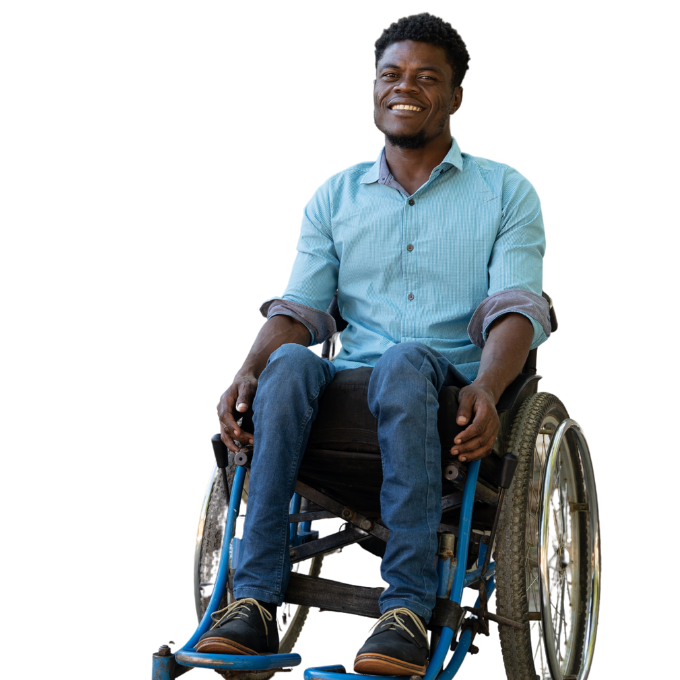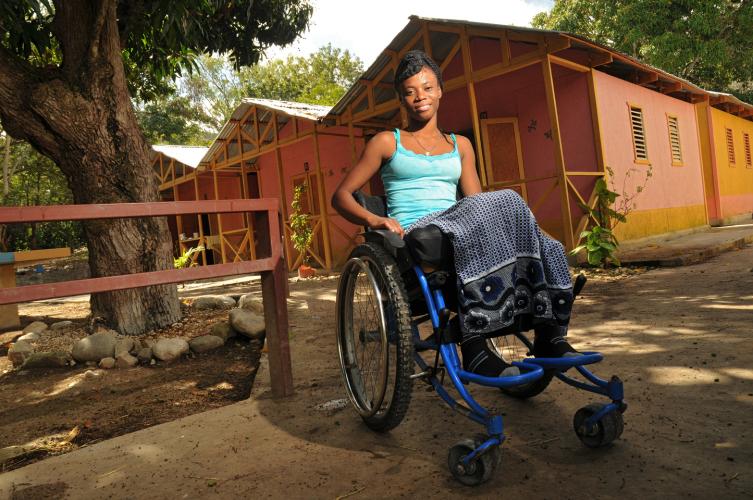“My favorite thing about my job is helping people realize their autonomy—just like I have.”
Your donation will help Maxsony provide critical support for patients with spinal cord injuries.


This guest post comes from Joan Obecny, a skilled nurse practitioner specializing in wound care from Olney, Maryland. She has been volunteering her skills at SBH for the past eight years, as a general nurse, as part of our mobile clinics, and with a visiting eye care team. She recently spearheaded the development of several nurse education programs as well as the Risk Assessment/Wound Management Program at our Spinal Cord Injury Center.
The SCI Center Risk Assessment and Wound Management Nurse Clinician education training program focuses on the prevention and /or treatment of patient complications specifically related to the consequences of spinal cord injury (SCI). This nurse training began in September 2012 as a part of the SCI Center Rehabilitation and Community Reintegration Program which was created after the 2010 earthquake. This Risk Assessment/Wound management program endeavors to elevate the level of preventive, rehabilitative, and treatment services needed by this unique patient population.
While prevention is a key component of any health-promoting program, it is at the very core of every aspect of spinal cord injury care: learning to assess patient risk, implement measures to prevent complications, and actively involve the SCI patient and caregiver in this process being the primary goal. Unfortunately, the potential risk of developing complications, particularly pressure-related skin breakdown, i.e. pressure wounds, is high. These pressure wounds can develop overnight and then take months or even years to resolve.
The nurses working in the SCI Center at SBH have devoted an immense amount of time and effort over the past 15 months to learning and implementing the specialized skin breakdown prevention and pressure wound treatment techniques required for their SCI patients. In addition to hours of classes and clinical hands-on training, self-study computer modules in the areas of risk assessment, pressure wound assessment, and advanced pressure wound treatment have been developed and allow for a more individual learning style.
Drawing on their experience and training, as well as the nurse instructional tools, the first four nurses in the SCI Wound Program have now begun training auxiliary nursing staff. This creates a self-sustaining skin breakdown prevention and pressure wound treatment program for the Center.
Tools to record and document wound risk assessment and wound treatment are now being used to track the condition and progress of patients. The SCI nurses are also educating patients and their caregivers, with the use of patient/caregiver instructional tools, on the techniques and lifestyle changes necessary to promote the ultimate goal of patient independent self-care and living.
These nurse clinicians have become competent and confident in using advanced wound dressing products and state-of-the-art wound treatments such as Negative Pressure Wound Therapy (NPWT). NPWT is a wound treatment that promotes rapid wound closure by improving blood flow and removing drainage from a wound. Numerous SCI patients with large, heretofore non-closing, pressure wounds have benefited tremendously from this therapy with accelerated wound closure.
Great appreciation must be extended to those companies making treatment donations, without which the success of this program would not be possible. KCI (Kinetic Concepts, Inc.) donated two NPWT machines with dressing supplies; Molynke Pharmaceuticals donated advanced wound dressing products. These generous donations, and those of private donors, have enabled the SBH SCI Center to be one of only a few locations in Haiti that provide these state-of-the-art wound treatments.
With these new policies, procedures, and equipment in place, the original four nurses and newly trained auxiliary nurses have attained a self-perpetuating, self-sustaining training and patient care program. The results allow for greater understanding in the prevention of skin breakdown in this high-risk population, for faster and ultimately less costly pressure wound closure, and for the enhancement of patient/caregiver independence in self-care and community reintegration.
The time invested and commitment made by these SCI nurse clinicians to learn and implement the interventions necessary to promote the optimum treatment and health of their SCI patients has been remarkable and truly inspiring to me. The work has been hard, but the rewards great, as illustrated by the smiles of dedicated SCI nurses.
Your donation will help Maxsony provide critical support for patients with spinal cord injuries.
